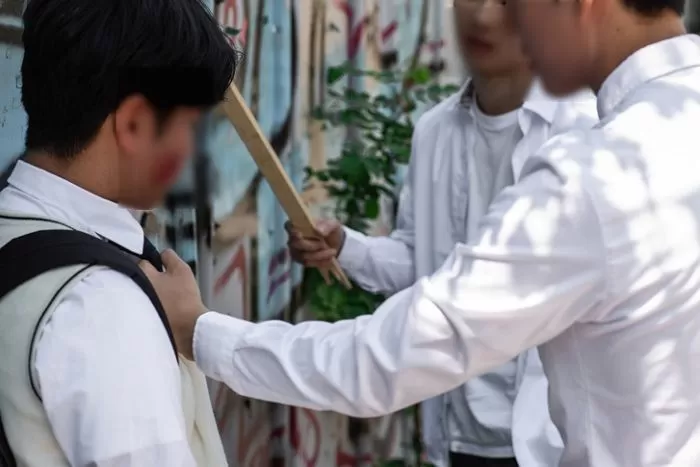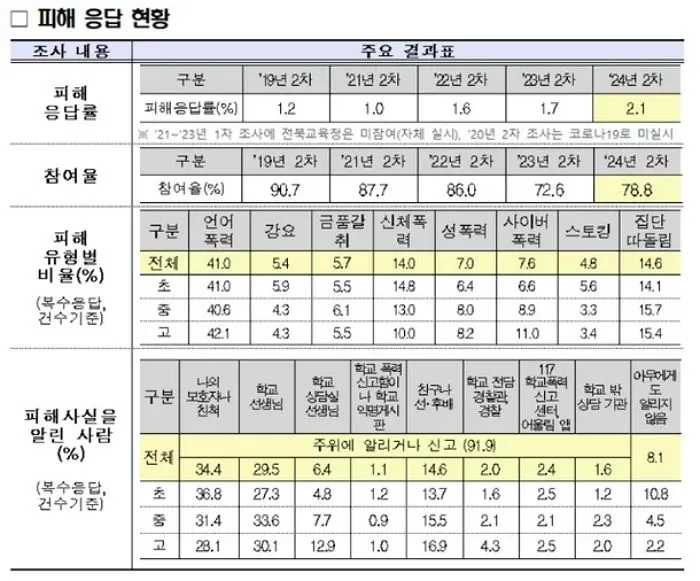Last year's school violence survey revealed that verbal violence was the most prevalent, accounting for 41%.

This marks the highest rate since 2018, based on the results of the '2024 2nd School Violence Survey', conducted by the Ministry of Education among approximately 210,000 students from the 4th grade of elementary school to the 2nd year of high school from September to October last year. The survey found that the response rate for victims was 2.1%, which is an increase of 0.4 percentage points compared to the same period last year.
When examined by school level, the response rate for victims was 3.8% in elementary school, 1.6% in middle school, and 0.6% in high school, showing an increase in each category compared to the previous year.
By type of victimization, verbal violence was the most common, followed by bullying (14.6%), physical violence (14.0%), cyber violence (7.6%), and sexual violence (7.0%). Notably, the proportions of bullying, cyber violence, and sexual violence increased compared to the previous year.
The proportion of students who informed others or reported the violence was 85.2%, with the majority notifying their guardians or relatives (34.4%) and school teachers (29.5%). The overall witness response rate was 6.0%, and among those who witnessed the incidents, 64.4% reported or helped afterwards.

The perpetrator response rate was overall 0.9%, with the most common reason for offending being "for fun or without a specific reason" (34.1%).
Among those who had experienced being a perpetrator, 80% ceased the violence, mainly due to realizing "that bullying other students is wrong" (29.8%).
The most frequently identified effective preventive activity was "education on preventing and addressing school violence" (26.5%). As for the content that students believed was necessary for preventive education, the most common was "how to cope when experiencing school violence" (27.3%).
Image source: Material photo to aid understanding of the article / gettyimagesbank, Ministry of Education.


